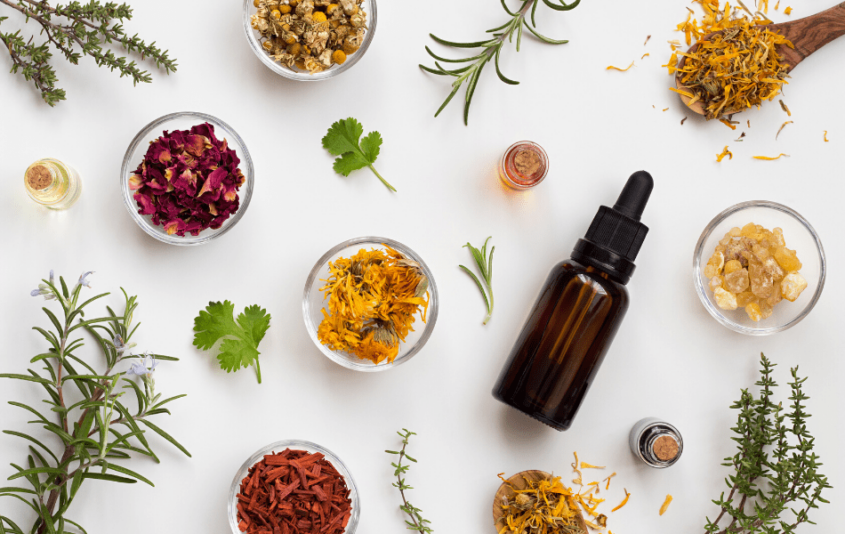Essential oils (EOs) are Mother Nature’s most concentrated form of plant medicine.
They have been used by various cultures worldwide for hundreds of years due to their claimed medicinal properties.
Their therapeutic use is called aromatherapy.
In recent years there’s been a rise in EO research and interest given their potential abilities to improve mood and sleep, boost immune function, and accelerate healing.
More and more people are learning to use EOs in their homes for medicinal alternatives, beauty and skincare, and even natural household hacks like DIY counter cleaners and air purifiers.
If you’re just starting out or getting familiar with the oily life you may initially want to turn to cheap oils first or go with the brands that your friends or family recommend.
This is where investing a bit of time in doing your own research and due diligence can pay off in the long run.
In many instances, it may be the case that cheaper oils aren’t always better.
Or those recommending EOs to you may not have been as diligent or thorough in their own research.
Growing your EO collection can seem like a daunting and cost-intensive task if you don’t have the proper guidance and don’t understand basic market elements such as pricing.
If you were to do a comparison you’d likely find big price differences amongst different EO brands and companies for seemingly similar oils.
This can be for many reasons, and sometimes it’s just true that good things are worth the cost…
Do expensive oils work better than cheaper oils?
Generally speaking – yes.
If an EO is priced dramatically lower than similar-sized oils, that’s probably a red flag that it’s impure or diluted somehow.
As a rule of thumb certified organic, therapeutic grade oils are the highest quality oils that offer the maximum medicinal/therapeutic value.
Synthetic oils are the most processed and lowest grade oils.
They’re often masked by clever marketing and copywriting.
No matter how good the label may look or read, if it’s synthetic it doesn’t have high therapeutic value.
Oils marketed as “natural” and “pure” but not organic or therapeutic grade are likely highly processed and may contain harmful chemicals and pesticides.
EOs purchased from big-chain retailers at cheaper prices tend to be much more adulterated and diluted than oils purchased from smaller specialty retailers and apothecaries.
Why are some essential oils so expensive?
Not all EOs are created equal.
Oils come from different sources and parts of plant and tree material such as flowers, leaves, bark, resin, fruit, roots, or seeds.
Each of these sources has its own production times, processing times, etc.
These can vary in cost.
Though not an exhaustive list, here are just some of the factors that can influence the price of essential oils:
Certified organic or not?
It costs more to extract oils from certified organic crops than it does from conventional ones.
Specific parts that are extracted and processed
Even though an EO can be extracted from the same plant or tree it may vary in parts.
For example, it’s generally more costly to extract from tree bark than it is to extract from tree leaves.
The Latin (botanical) name vs common name
An EO’s common name is exactly that – the name it’s commonly known by.
Its specific botanical (Latin) name can vary even though the common name is the same.
For example:
Common name – Eucalyptus
Different botanical names – Eucalyptus globulus, Eucalyptus citriodora, Eucalyptus dives, Eucalyptus radiata
Different botanical varieties will contain different chemical compounds and offer different benefits, which can cause the price to vary accordingly.
Where and how the plant parts are sourced from
How and where the plants are sourced from matters and impacts costs.
Plants that are harvested in their natural habitat and at optimal times are more expensive because they offer maximum quality.
What amount is needed to process one bottle
Since EOs are concentrated, it typically takes a lot of plant material to process one small bottle.
For example, it’s estimated that it takes anywhere from 50-70 lemons to produce one bottle of lemon oil.
It can take about 65 roses to produce just one drop of essential oil.
It’s also estimated that one pound of lavender essential oil takes 250 pounds of lavender flowers.
All of this will greatly impact production times, processing intensity, and of course, cost.
Level of testing
High-quality oils and reputable companies submit their products to rigorous testing before hitting the market.
This is to ensure the safety of the consumer and the purity of the oil.
Companies that test for contamination, pathogens, and other chemicals have to spend more money, which drives the cost of the oil up.
The most generally accepted and thorough test is called GC/MS (gas chromatography/ mass spectrometry).
GC/MS detects if oils have been diluted or contaminated with solvents etc.
It also gives a detailed account of the oils’ main chemical constituents.












